Creative content, professional skills, success measurement and engaging the frontline: top IC takeaways from Interact Live

What are the biggest challenges facing the internal communications industry, and how do we address them? Where is the profession going? How do we maximize our success and value?
These were just some of the questions our guests and delegates brought to the table at etcVenues in Monument, London, this week. The free Interact 1-day conference was designed around the broad topic of ‘internal communications for the digital generation’: a recognition that the industry is changing, evolving, and now covers many different areas in today’s workplace.
Each session brought something new and different to the day, but there were some overriding themes that cropped up time and again. In the face of limited budgets and resource, for example, the need to demonstrate value and measure success is critical. Our audiences are harder to capture and engage in a world of digital noise. And great content really is king.
Here’s our highlights from the day.
Data and metrics are the key
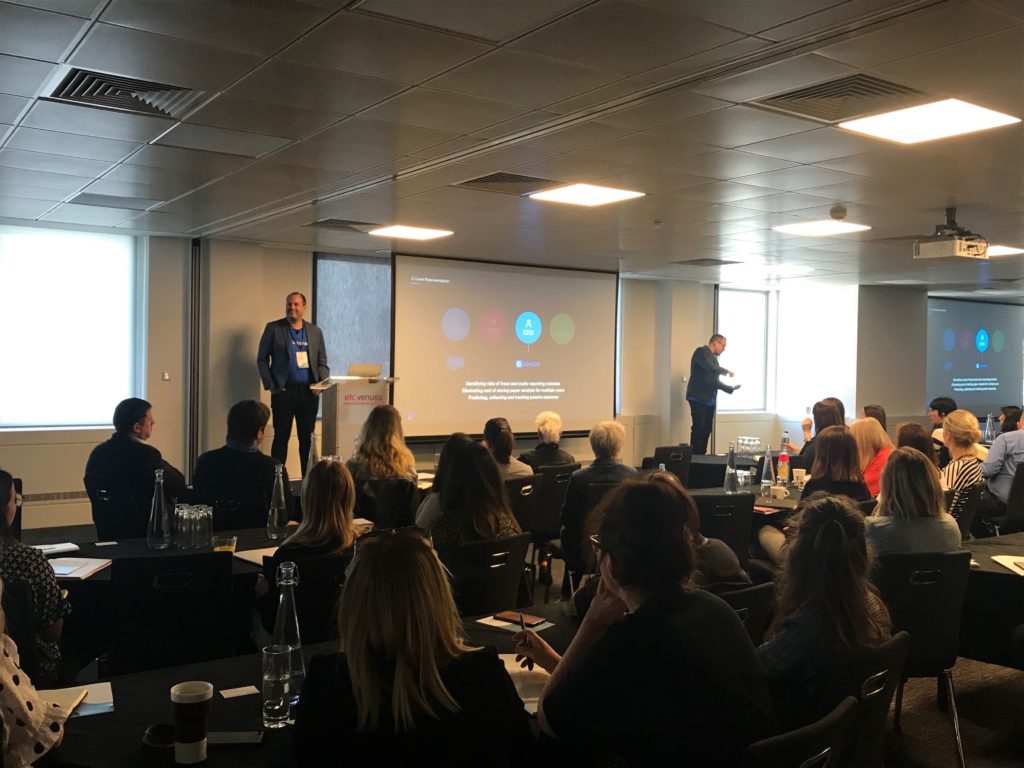
What are the top three internal comms problems in 2019? Interact experts Matt McCourty and Haydn Smith were first to the stage and put forward some all-too-familiar challenges:
- We still haven’t won over senior leaders
- We’re working blind and failing to demonstrate our value
- We’re simply not investing enough
In fact, the Gatehouse State of the Sector Report 2019 revealed spending per month on internal communications ranges from £4 for companies with 2,500 staff, to less than £1 for those with 50,000 staff. The key to securing buy-in and budget – as well as improving performance – lies in measurement.
But we’re still lagging on the uptake, Haydn explains.
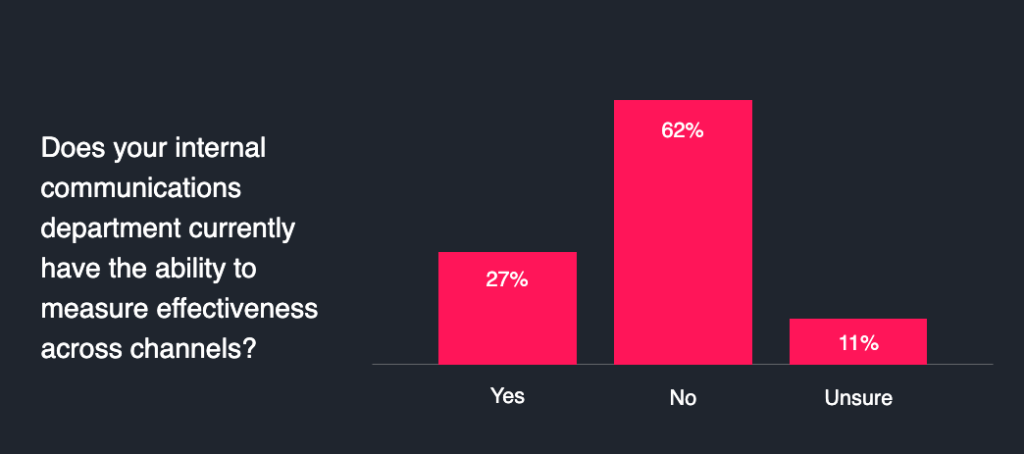
Metrics and data already residing within our organizations – and our intranets in particular -can demonstrate ROI, prove worth, and establish IC as a strategic player in the C-suite.
A shift away from ‘lagging indicators’ – those metrics that give us insights that can only show how things are now or after the fact – towards ‘leading indicators’ is needed, Matt argued.
These signal future issues that can be addressed and present opportunities for greater ROI: getting IC greater credibility and value in the eyes of senior leadership. The concrete example given was the drilling down of data to identify ‘red flags’ for staff turnover, which could be fed back to middle managers to address and reduce employee churn.
A skill-led approach to mapping the intranet, digital workplace and IC industry can help us figure out where we are, and where we want to go
Chris Tubb and Steve Bynghall of Spark Trajectory presented their skills matrix for IC, intranet and digital workplace professionals, demonstrating how the confluence between social and collaboration, content and communications, UX/usability and IT has created a foundation for the sector as we understand it today.
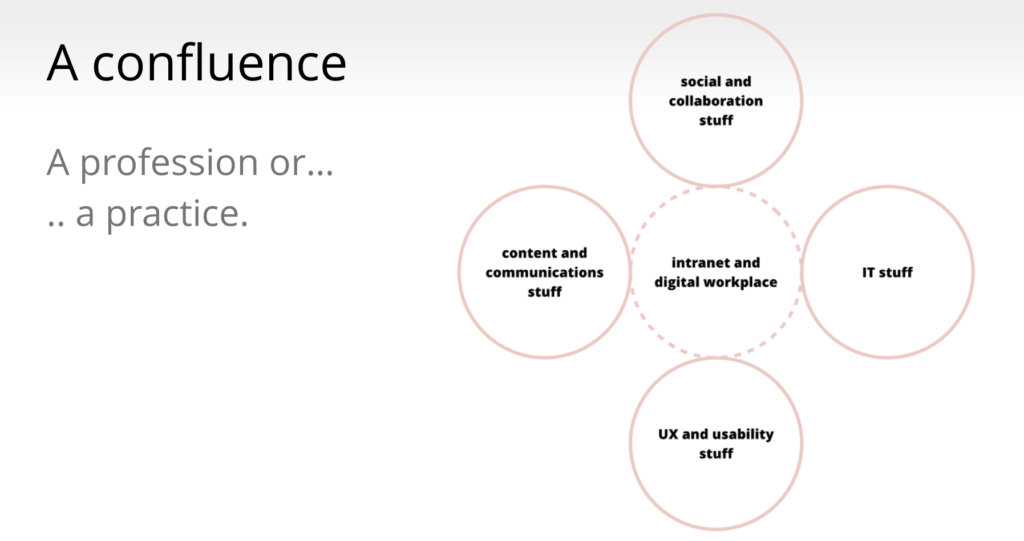
Their open-source matrix (find it here) gives us a greater understanding not only of the many routes into the field but the sheer range and diversity of the industry. Simply put, it helps show what we do: and where we can go.
What we do is hard to define, but that’s also a positive thing, not a bug. It’s an exciting thing to be a part of.”
Chris Tubb, Spark Trajectory
Approaching the industry from a skill-led perspective can also help us identify the gaps and requirements for our own teams. Where do we need external resource? To up-skill in-house practitioners? Where do the boundaries and relationships lie among our different teams?
For a profession that is still, relatively speaking, in its early stages, this is a truly valuable tool.
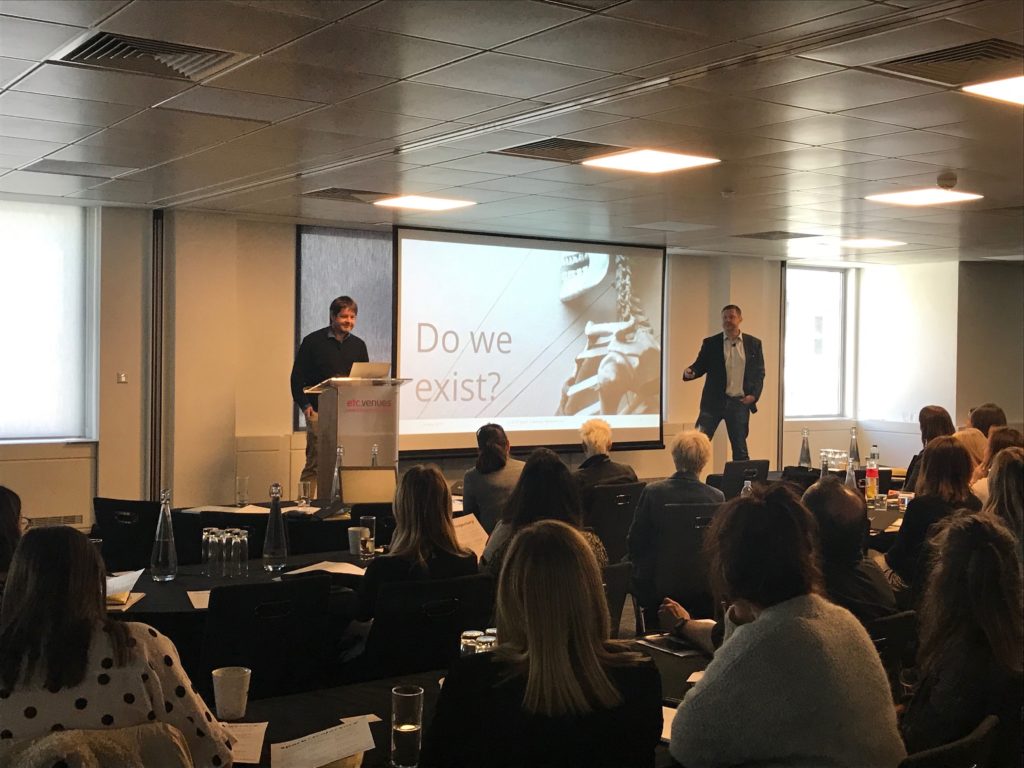
“We are at the crossroads of other professions,” Chris argued, “and our skills will evolve, adapt and change, because that’s the nature of the tools and technology we work with. That makes what we do hard to define, but that’s also a positive thing, not a bug. It’s an exciting thing to be a part of.”
Content is king
It’s a mantra for a reason, and the common topic for Michael Geeleher of Sony Interactive Entertainment EU and Interact’s own Kelly Freeman, Intranet Strategist.
Taking us through his journey as sole EU-focused IC resource for the renowned makers of Playstation, Michael hammered home the value of well-crafted and considered channels – and content – for internal communication.
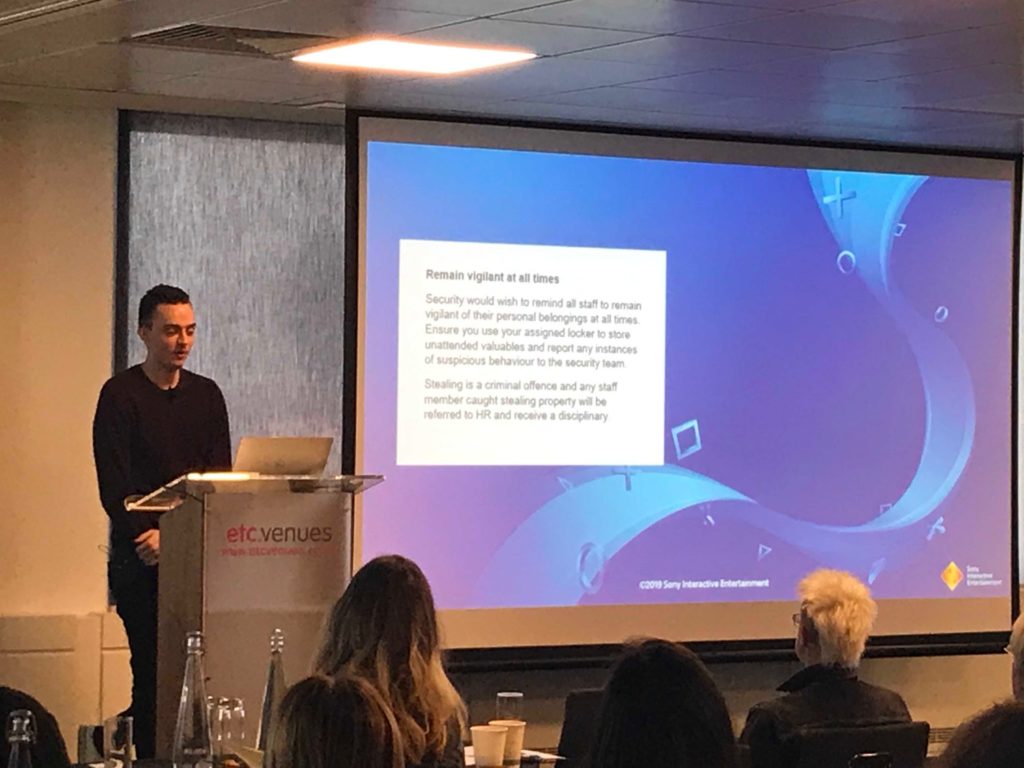
Making our internal communications interesting and engaging isn’t a ‘nice to have’. It’s essential.
Michael Geeleher, Sony Interactive Entertainment Europe
The transformation from a ‘dead dumping ground’ SharePoint intranet to the new and visually captivating ‘Hub’, launched just last month, caught the attention of delegates. Use of iconography, attention-grabbing hero banners and a highly visual design were just some of the tricks Michael has used in his intranet design process to capture staff attention in an increasingly crowded digital space.
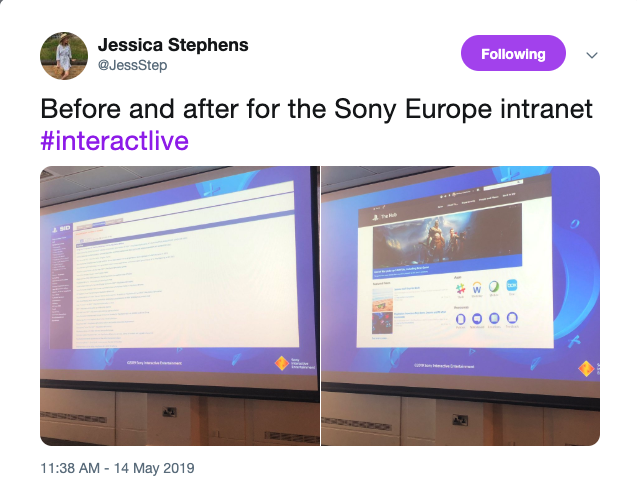
Michael also showcased his work with the in-house security team to spark some creativity into some dry messaging: “reframing core messaging and changing the tone of voice just helps content, well, get read.”
Playing on the more informal culture and tone of Sony Interactive Entertainment, he showed how something like a security advisory communication – which many employees will switch off at – can be transformed into something impactful, engaging, and even fun.
Intranet Strategist Kelly Freeman picked up the theme with her engaging workshop on crafting content for online audiences. Opening with some familiar – but nonetheless terrifying – attention facts, Kelly laid out the core internal communications challenge: our audiences aren’t giving us their time. Just 10-20% of people, on average, read to the bottom of the page.
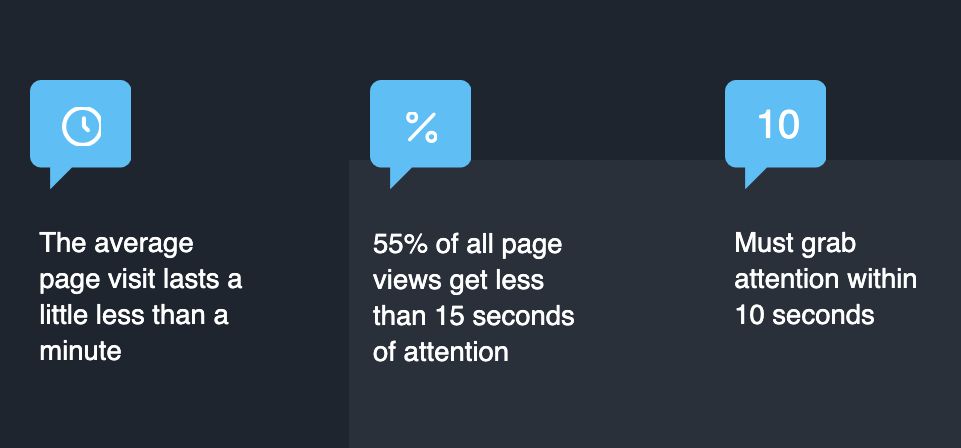
With a practical exercise, Kelly reiterated the core best practices for effective communication: focusing on the use of titles, an inverted pyramid strategy, use of microcontent including bullets, subheadings and highlighting, chunking, and the use of plain English in the active voice.
Remote workers are nothing new – but we can finally engage them properly
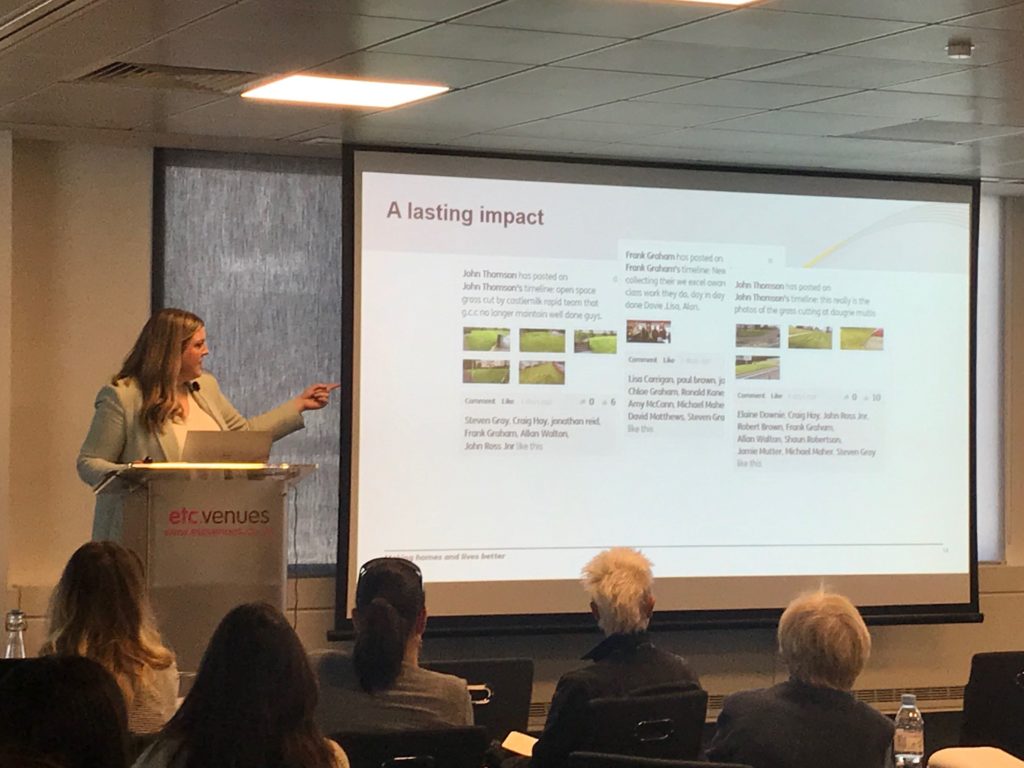
Frontline, remote and dispersed workers are continuing to hit the topic headlines in the world of IC, but as Laura Hood – Communications Officer at Wheatley Group – argues, they’re far from a new phenomenon. The difference now is we finally have the tools and means to connect with and engage them.
Making it personal is crucial. We have to make our intranet work for everyone, from Tommy the gardener right the way up to the CEO.
Laura Hood, Communications Officer, Wheatley Group
With a whizz tour of the Scottish housing group’s award-winning intranet, W.E.Connect, Laura demonstrated how Wheatley is tapping into a demographic that was previously unreachable. “Making it personal is crucial,” Laura explained. “We have to make our intranet work for everyone, from Tommy the gardener right the way up to the CEO.”
Taking personalization to a new level, W.E.Connect offers tailored homepages for different staff personas alongside regular human-focused news stories, social tools and diverse content including video. Since its relaunch, the new intranet has driven some hugely impressive usage stats – particularly considering the large number of staff who are non-desk-based.
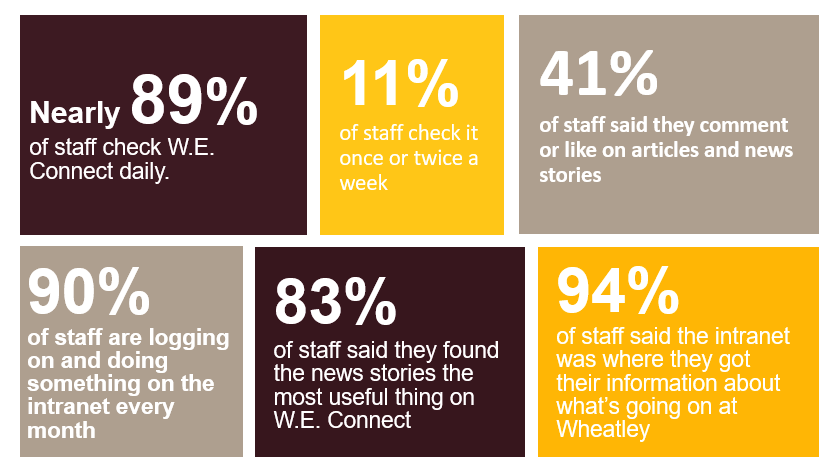
However, it was the use of selfies and encouraging staff to post their stepcount as part of a ‘Walk the Wheatley Way’ challenge that captured the imagination of the audience: “It proved a really valuable way to get our unsung heroes on the frontline to engage with the platform”.

Focus on the human connection
The day closed with a presentation from CEO at the Institute of Internal Communications, Jennifer Sproul.
You are the experts. Despite what they might think, not everyone can do communication well. Have confidence and lean in at the top table. You belong there.
Jennifer Sproul, CEO, Institute of Internal Communications
Echoing the challenges highlighted by previous speakers, Jennifer spoke to the difficulty communicating in an ‘age of skimmers’ who are now more visually-driven and increasingly dispersed: but also have the power to build out brand reputation from the inside-out.
“We don’t want to just feel like part of the system anymore. Employees are fighting back,” Jennifer argued. “There’s a desire for greater authenticity, openness: we want to be valued, connected and informed. This is where Internal Communications has a critical role to play. Empathy is one of our biggest strengths as a profession: people buy-in to the emotional.”
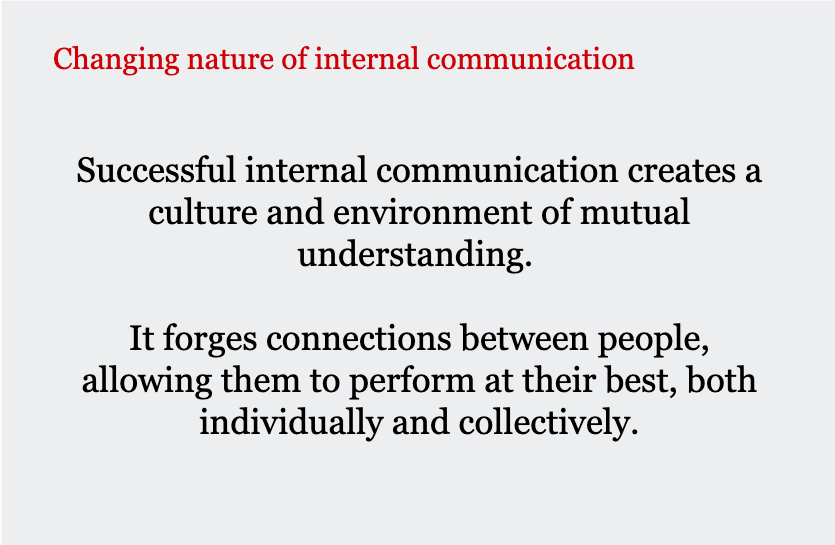
It was this idea of IC connecting staff to purpose that really came through in Jennifer’s overview. Just 34% of staff understand the impact of their work on the wider business and there’s a clear priority for IC teams to communicate strategy, values, and purpose to employees: to increase understanding of where we fit or contribute in the big picture.
“Be the voice of your employees,” Jennifer urged. “Know your audience, understand them, listen to them, build on the emotional connection”. We also had confirmation of the need to measure effectiveness, use data to gain meaningful insights, and use segmentation of audiences for more personalised messaging in internal communication.
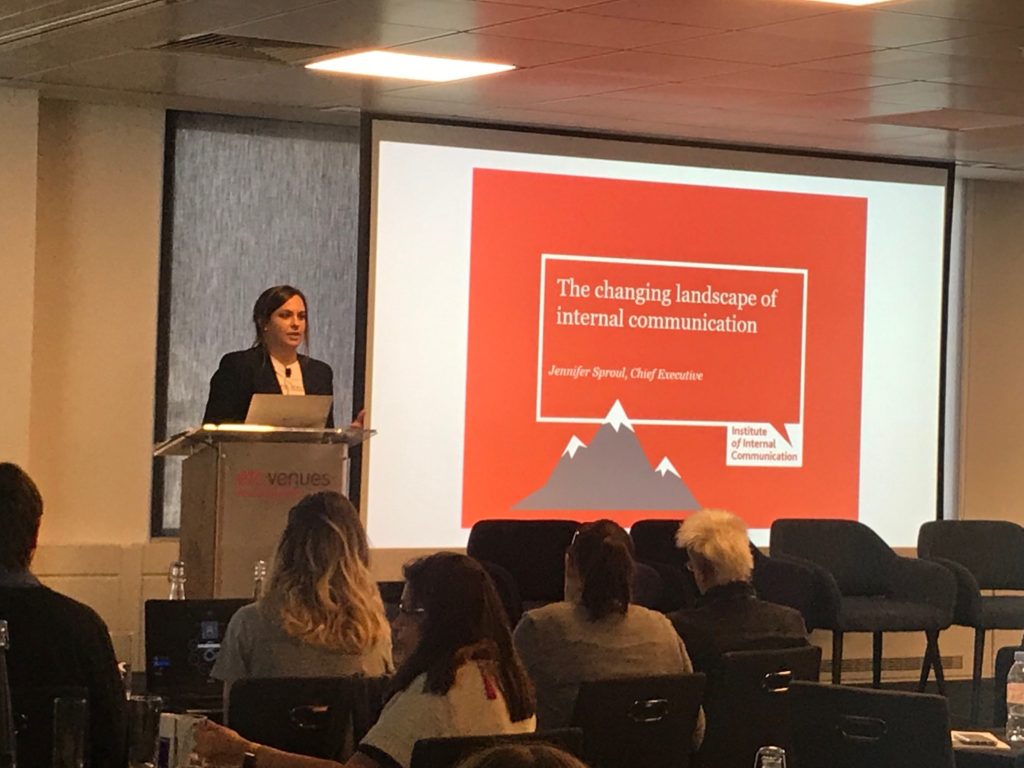
Above all else, Jennifer urged those in the profession to have confidence. “You are the experts. Despite what they might think, not everyone can do communication well. Have confidence and lean in at the top table. You belong there.”
We’d like to extend our thanks to our incredible speakers and contributors, who brought a wealth of insights and discussion points to the day; but also to all our attendees, who were active and engaged participants throughout.
